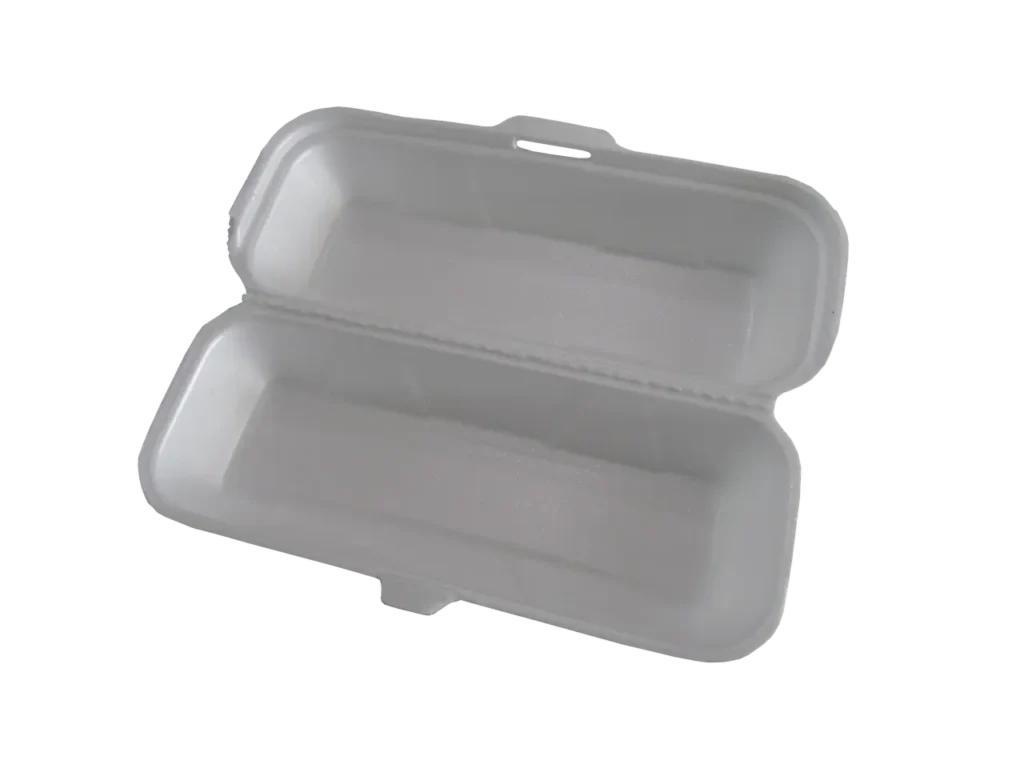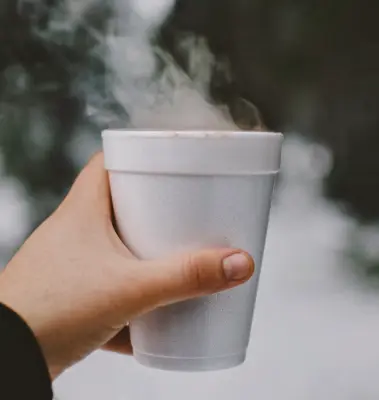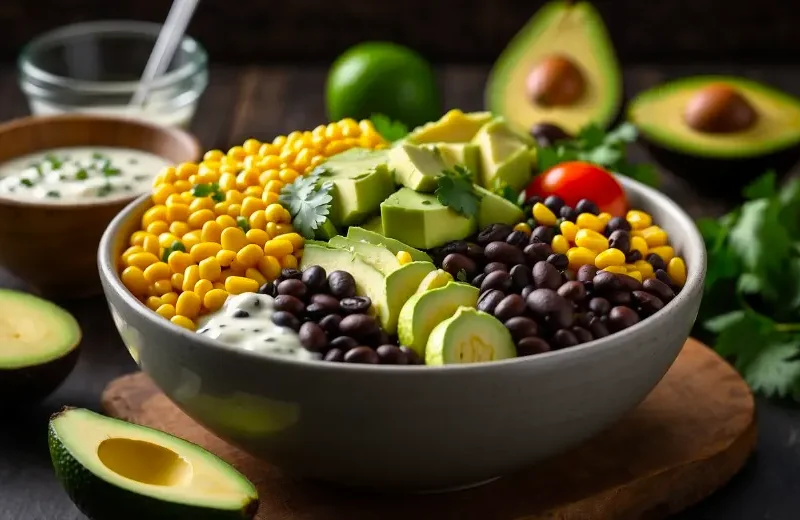I often come across questions concerning kitchen safety and best practices, one of which involves the correct use of materials in the oven. Specifically, many people want to know if it’s safe to put Styrofoam, including Styrofoam containers and cups, in the oven. It’s important to clarify this because Styrofoam is a type of polystyrene foam that’s commonly used for food packaging and insulation.

From my understanding, Styrofoam should not be heated in an oven. The material is not designed to withstand the high temperatures that ovens typically reach, even on a low setting. When exposed to such heat, Styrofoam starts to soften and may release harmful chemicals into the food, presenting a health risk.
Moreover, if you’re considering giving your Styrofoam items a new look or repurposing them, the oven is not the tool for the job. There are creative ways to reuse these foam products, but when it comes to applying heat, it’s best to err on the side of caution and keep Styrofoam out of your oven.
Understanding Styrofoam
Before diving into the specifics, it’s crucial to recognize that Styrofoam, a trademarked brand name, is commonly used to refer to a variety of expanded polystyrene (EPS) products. These products are prevalent in our daily lives due to their lightweight and insulating properties.
Composition of Styrofoam
Styrofoam is crafted from polystyrene beads that are expanded and fused together through a process involving heat and pressure. This results in a material that is not only light and versatile but also excellent for insulation. It’s a specific type of building product used in both commercial and residential construction for thermal insulation and water barriers.
Styrofoam in Daily Use
In everyday applications, Styrofoam serves as a common material for disposable coffee cups, food containers, and packaging materials. Its ability to insulate makes it ideal for keeping beverages warm or protecting delicate items during shipping. Even though it is a ubiquitous item in households and industries alike, I carefully consider its characteristics when it comes to heat exposure and environmental impact.
Safe Usage and Temperatures
When it comes to heating food in styrofoam, I understand that it’s critical to distinguish between microwave and oven use due to the material’s heat sensitivity. The melting point of styrofoam necessitates caution, as surpassing this can lead to container degradation and potential food contamination.
Microwave vs Oven Use
In my experience with food containers, I’ve learned that certain types of styrofoam are labeled as microwave-safe. This means they can withstand the microwave radiation without melting or releasing harmful chemicals. However, oven-safe containers are a completely different matter. An oven operates at high temperatures and can produce thermal shock, which degrades styrofoam quickly. It’s best to avoid using any styrofoam products in a conventional oven, as they are not designed to withstand the higher temperature levels found in such appliances.
| Styrofoam and Temperature Safety |
|---|
| Temperature | Microwave/Oven Safety |
|---|---|
| Room Temperature | Styrofoam is generally safe for storing food at room temperature, such as in packaging or containers used for dry goods. |
| Refrigerator | It is safe to store cold food or beverages in styrofoam containers in the refrigerator. However, avoid using styrofoam with acidic foods or liquids. |
| Freezer | Styrofoam can be used to store food in the freezer, but it’s essential to ensure it’s tightly sealed to prevent freezer burn and odors. |
| Microwave | Styrofoam should never be used in the microwave unless explicitly labeled as microwave-safe. Heating styrofoam can cause it to melt or release toxins. |
| Oven | Styrofoam should never be used in the oven as it can melt, release harmful chemicals, and pose a fire hazard. |
| High Temperatures | Avoid using styrofoam with hot or boiling liquids, as high temperatures can cause it to break down and release toxic chemicals into the food or drink. |
| Acidic Foods/Liquids | Styrofoam should not be used with acidic foods or liquids, as they can accelerate the breakdown of the material and increase the risk of chemical leaching. |
Melting Point and Heat Resistance
Styrofoam’s melting point is a crucial factor for safe usage. Styrofoam containers typically begin to soften at around 212 degrees Fahrenheit and will melt at approximately 464 degrees Fahrenheit. These temperature thresholds highlight that styrofoam’s heat resistance is relatively low compared to materials explicitly designed for high-temperature cooking. In an oven, where the temperature can easily exceed these limits, styrofoam should be replaced with a suitable alternative to prevent melting and potential food safety issues.
Health Concerns and Chemicals

As a researcher focused on food safety, I consider the health implications of cooking practices to be paramount. One topic of particular concern is the use of Styrofoam—a material often chosen for convenience—in kitchen environments.
Toxicity and Chemical Release
When exposed to the high temperatures of an oven, Styrofoam can release toxic fumes that may pose health risks to individuals. The chemicals emitted from heated Styrofoam include styrene, which is classified as a possible human carcinogen by the International Agency for Research on Cancer. Human studies have suggested that long-term exposure to styrene can lead to harmful health effects like nervous system issues and more.
- Styrene: Can leach from Styrofoam when heated. Possible effects on humans include headache, fatigue, and depression.
Regulations and Studies
The U.S. Food and Drug Administration (FDA) recommends against placing Styrofoam in ovens due to the potential risks associated with chemical leaching. FDA-approved Styrofoam is labeled for use with food, but with clear usage guidelines that exclude high-temperature scenarios.
- FDA Guidelines: Emphasize safe use of food containers, with a stringent focus on temperature limits to prevent health hazards.
Based on my knowledge and available research, it’s clear that ovens and Styrofoam do not mix well, with significant evidence pointing toward negative health implications stemming from chemical exposure.
Identifying Microwave-Safe Products

When selecting containers for microwaving, it’s crucial that I choose those specifically labeled for microwave use to ensure safety and prevent harmful chemicals from leaching into my food.
Labels and Symbols
The most reliable way to identify a microwave-safe container is by looking for the microwave-safe label or symbol. This label is typically a series of wavy lines and can often be found on the bottom or back of the product’s packaging. When I see this symbol, I’m confident that the product has been tried and tested and deemed safe for microwave use. It signifies that the container won’t melt or release harmful substances when heated in the microwave.
Alternatives to Styrofoam
If I come across a product without microwave-safe labeling, it’s better to opt for alternative materials. Glass plates and ceramic dishes are generally safe options, provided they don’t have metallic paint or trim. Another alternative is to use a plain paper plate, which offers a disposable option without the concerns associated with styrene. I always make sure that any alternative I use does not have metallic elements or is not too thin to avoid it catching fire or breaking under high heat.
Handling Food and Beverages
When managing food and beverages, it is crucial to consider the temperature at which items are served and the materials used for their storage. The safety and maintenance of food’s quality are dependent on these factors, especially when transitioning between hot and cold environments.
Hot vs Cold Items
Handling hot food and hot liquids demands attention to the type of containers used. Styrofoam is suitable for keeping cold food items and cold drinks chilled, but it is unsuitable for hot drinks or food that needs to be heated. For example, if I’m referring to a Food Network article, I would specify that it’s important to transfer hot food to heat-safe containers.
- Warm food or fatty foods should not be placed in Styrofoam as the heat can cause the material to soften or even melt.
- Alcoholic beverages, typically served cold, can be safe in Styrofoam, but serving them hot in such containers is not recommended.
Transfer and Storage Practices
To effectively store food, whether hot or cold, understanding the properties of storage materials is key. Here’s what I practice:
- For cold food items: Styrofoam containers are an excellent way to maintain temperature without the risk of degradation.
- For hot liquids or oily liquids: Glass or metal containers are the safer choices, as they can tolerate high temperatures without releasing harmful substances.
I avoid using Styrofoam when I need to reheat food in the oven. Instead, I opt for oven-safe glassware or ceramic containers that can handle the heat without compromising food safety or quality.
Practical Tips for Oven Use
When heating food in the oven, safety and proper techniques should be your top priorities. Here I’ll guide you through the use of safe alternatives to Styrofoam and share essential tips to avoid hazardous situations.
Safe Alternatives to Styrofoam
In my experience, Styrofoam should never enter the oven due to its low melting point and potential to release harmful chemicals. I recommend using oven-safe materials as alternatives. My list of trusted materials includes:
- Glassware: Ideal for baking and roasting, handles high temperatures well, and is microwave safe.
- Ceramic: Similar to glass, it’s perfect for casseroles and pies.
- Silicone: Versatile and heat-resistant, it’s a good option for baking molds.
- Cast Iron: Excellent for high-heat cooking and adds a flavor benefit to certain dishes.
- Stainless Steel: Durable and even resistant to rust or staining.
Before using any container or cookware in the oven, I double-check for a label that clearly states it’s oven-safe.
Avoiding Hazardous Situations
I always prioritize safety in the kitchen to avoid unwanted accidents. Here are some tips to ensure a safe cooking experience:
- Use Oven Mitts: They are essential for handling hot cookware. I keep mine within reach to protect my hands.
- Aluminum Foil: Handy for lining baking sheets, covering dishes to prevent over-browning, and wrapping food for even heating.
- Correct Heating: I follow the recommended oven temperature and time to avoid under or over-cooking, which is not only safer but yields better results.
- Proper Food Placement: I make sure there is enough space around the cookware for hot air to circulate, ensuring even cooking.
By paying attention to these guidelines and using the right materials, I ensure that every use of my oven is both safe and efficient.
Evaluation and Disposal
Before considering the use of any container in the oven, I ensure it’s safe to avoid health hazards and kitchen accidents. Now let’s examine how to recognize unsafe conditions and the best methods for disposing of these materials.
Recognizing Unsafe Conditions
When evaluating if a container is safe for oven use, I look for visible damages such as warping or melting, which are clear signs that the material cannot withstand high temperatures. EPS containers and takeout containers, often made from expanded polystyrene, especially single-use polystyrene containers, are not suitable for the oven. If these items show any signs of distortion, they’ve likely been compromised by heat, indicating they’re unsafe for further use in any cooking appliance. Disposable plates, although convenient, fall under the same scrutiny and must be checked thoroughly before use.
Proper Disposal Methods
Even though EPS containers, including takeout containers and single-use polystyrene containers, are immensely convenient, they necessitate proper disposal. Here’s how I handle the disposal:
- Empty the container: Ensure all food waste is removed.
- Rinse if possible: Clean containers have a higher chance of being recycled.
- Check for recycling symbols: Not all facilities can process polystyrene, so this step is crucial.
- Local facilities: If recycling isn’t an option, I locate the nearest waste facility that accepts polystyrene.
- In the absence of recycling options, I resort to placing the materials in the trash. To reduce environmental impact, I limit my use of these materials.
By staying informed and mindful about the limitations of materials like Styrofoam, I prevent kitchen mishaps and contribute responsibly to waste management.
Frequently Asked Questions
In this section, I cover several common inquiries regarding the use of Styrofoam in various heating applications. Each question is addressed with specific information based on reliable sources and my own knowledge.
Is it safe to heat food in Styrofoam containers?
No, it is not safe to heat food in Styrofoam containers in a conventional oven, as the material cannot withstand high temperatures and may melt or leach chemicals into the food.
What happens when Styrofoam is exposed to high temperatures?
When exposed to high temperatures, Styrofoam begins to soften, and at even higher temperatures, it will melt. This can cause a mess and potentially release harmful substances.
At what temperature does Styrofoam melt or become hazardous?
Styrofoam starts to soften at around 212°F (100°C) and melts at approximately 464°F (240°C), with these temperatures representing potential hazard points for the material.
Can Styrofoam be used in air fryers without risk of melting?
Using Styrofoam in an air fryer is not advisable, as it can reach temperatures high enough to melt the material and create a safety hazard.
Can you bake polymer clay on Styrofoam without causing damage?
It is a bad idea to bake polymer clay on a Styrofoam surface as the heat required to cure polymer clay is enough to damage or melt Styrofoam.
Does Styrofoam release harmful substances into food when heated?
Heating food in Styrofoam containers can cause the material to release potentially harmful substances into the food, which may be a health risk.
Chipotle-Style Black Bean Bowl
Course: LunchCuisine: MexicanDifficulty: Easy2
servings20
minutes20
minutesTry our Copycat Black Bean Bowl from Chipotle. Remember, when bringing home take-out from restaurants, always remove the food from the container before reheating!
Ingredients
For the Black Beans:
1 can (15 oz) black beans, drained and rinsed
1 tablespoon olive oil
1/2 onion, diced
2 cloves garlic, minced
1 teaspoon ground cumin
1/2 teaspoon chili powder
Salt to taste
For the Cilantro Lime Rice:
1 cup long-grain white rice
2 cups water or vegetable broth
Juice of 1 lime
2 tablespoons chopped fresh cilantro
Salt to taste
For the Corn Salsa:
1 cup corn kernels (fresh, canned, or frozen)
1/4 cup diced red onion
1/4 cup diced red bell pepper
1 tablespoon chopped fresh cilantro
Juice of 1 lime
Salt to taste
For the Guacamole:
2 ripe avocados
Juice of 1 lime
Salt to taste
For Serving:
Chopped lettuce or mixed greens
Diced tomatoes
Sliced jalapeños
Sour cream or Greek yogurt (optional)
Directions
- Start by preparing the black beans. In a skillet, heat the olive oil over medium heat. Add the diced onion and cook until softened, about 5 minutes. Add the minced garlic, ground cumin, and chili powder, and cook for an additional minute until fragrant.
- Add the drained black beans to the skillet and stir to combine. Cook for 5-7 minutes, stirring occasionally, until heated through. Season with salt to taste. Keep warm.
- While the black beans are cooking, prepare the cilantro lime rice. In a saucepan, combine the rice and water or vegetable broth. Bring to a boil, then reduce the heat to low, cover, and simmer for 18-20 minutes until the rice is cooked and the liquid is absorbed.
- Fluff the cooked rice with a fork, then stir in the lime juice, chopped cilantro, and salt to taste. Keep warm.
- To make the corn salsa, combine the corn kernels, diced red onion, diced red bell pepper, chopped cilantro, lime juice, and salt in a bowl. Stir to combine, then set aside.
- In another bowl, mash the ripe avocados with lime juice and salt to make the guacamole.
- To assemble the bowls, start with a base of cilantro lime rice and black beans. Top with chopped lettuce or mixed greens, diced tomatoes, corn salsa, guacamole, and sliced jalapeños. Add a dollop of sour cream or Greek yogurt if desired.

